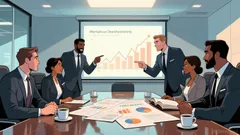In a sign of growing economic uncertainty, consumer inflation expectations in the United States have surged to their highest level since 2008. According to the University of Michigan's consumer sentiment index, inflation expectations for the year ahead jumped to 3.3% in January 2025, the highest reading since May 2024. This increase in inflation expectations can be attributed to several factors, including the incoming administration's policy agenda, potential tariffs, tax cuts, and immigration policy changes.
The incoming administration's policy agenda, which includes plans for aggressive, punitive tariffs on China, Mexico, and Canada, as well as other U.S. trading partners, has created uncertainty about the future of the economy. These tariffs are expected to raise the effective tariff rate by 3 to 4 percentage points, which could lead to higher prices for consumers and contribute to the increase in inflation expectations. Additionally, the extension and additional tax cuts proposed by the new administration are expected to boost spending, which could also contribute to higher inflation.
Immigration policy changes, such as tighter policy that may lower net immigration to 750,000 per year, moderately below the pre-pandemic average of 1 million per year, could impact the labor market and consumer spending, contributing to inflation. Despite moderating from 40-year highs, prices remain high, and the still-relatively healthy jobs market supported consumer spending, contributing to the higher cost of living.

Consumer expectations play a significant role in shaping consumer spending and savings behavior. Higher inflation expectations may lead consumers to spend more on goods and services they anticipate will become more expensive in the future. This is evident in the New York Federal Reserve's Survey of Consumer Expectations, which found that median household spending growth expectations fell by 0.2 percentage point to 4.9% in July 2024, the measure's lowest reading since April 2021. This suggests that consumers are becoming more cautious about their spending habits due to inflation concerns.
Higher inflation expectations can also motivate consumers to save more, as they anticipate needing to set aside more money to maintain their purchasing power. The same survey found that the average perceived probability of missing a minimum debt payment over the next three months increased by 1.0 percentage point to 13.3% in July 2024, the measure's highest reading since April 2020. This indicates that consumers are becoming more concerned about their financial situations and may be saving more to prepare for potential financial challenges.
Conversely, higher inflation expectations can also lead consumers to reduce their savings and increase their debt, as they may feel pressured to maintain their current standard of living despite rising prices. This is supported by the increasing proportion of consumers who believe they will miss a minimum debt payment over the next few months.
In conclusion, the surge in consumer inflation expectations in 2025 can be attributed to several factors, including the incoming administration's policy agenda, potential tariffs, tax cuts, and immigration policy changes. These expectations can influence consumer spending and savings behavior, leading to accelerated spending, increased savings, or reduced savings with increased debt. The Federal Reserve's monetary policy decisions may be influenced by these changing inflation expectations, as they can impact aggregate demand, business investment, and the Fed's ability to maintain its inflation target. As consumers and businesses adjust their behavior in response to higher inflation expectations, the Fed may need to act more aggressively to bring them back down to the target level.







Comments
No comments yet